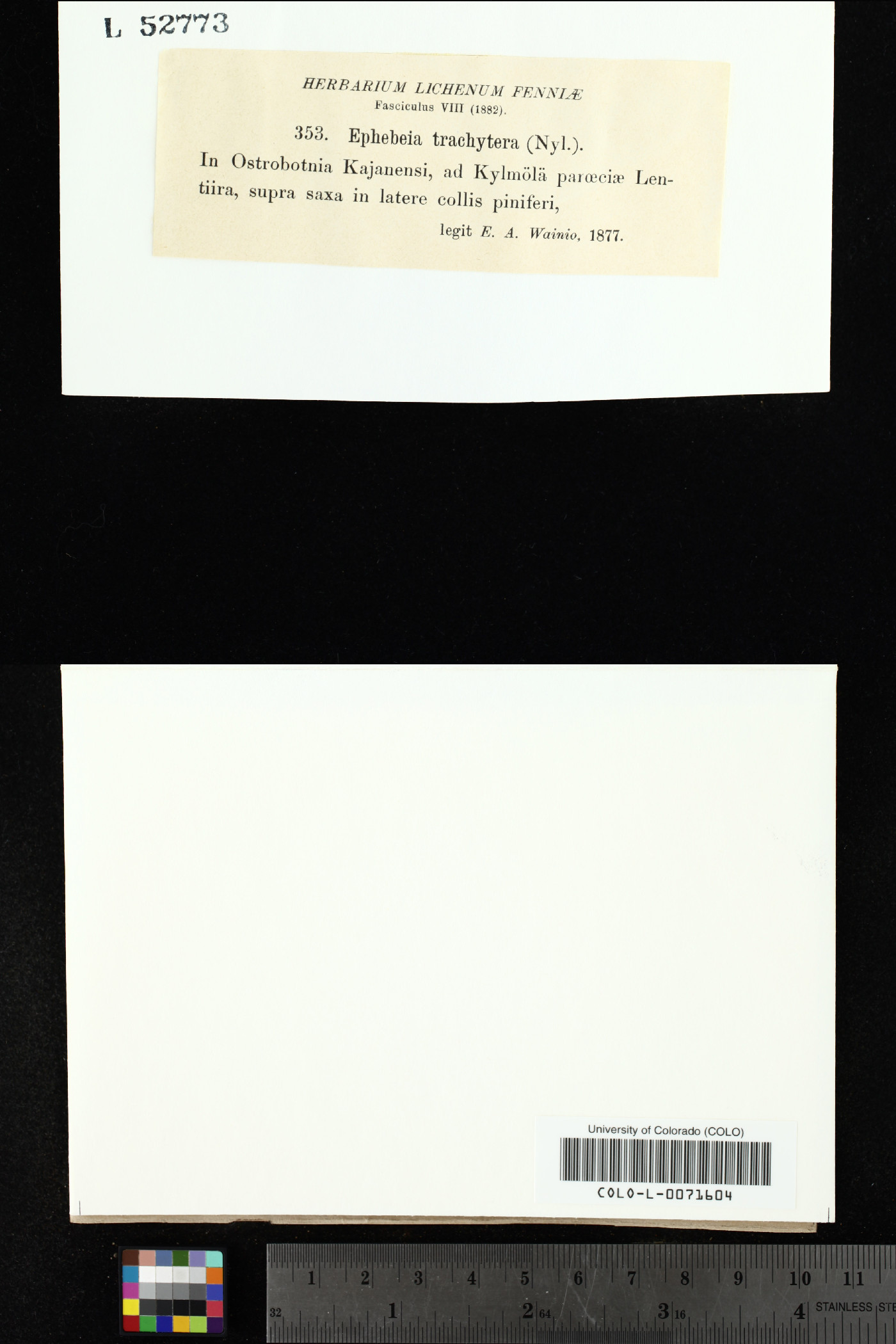
Consortium of Lichen Herbaria
- building a Global Consortium of Bryophytes and Lichens as keystones of cryptobiotic communities -
- Home
- Search
- Images
- Species Checklists
- US States: O-Z >
- US National Parks
- Central America
- South America
- US National Parks
- Southern Subpolar Region
|
|
|
|
Family: Lichinaceae
|
Nash, T.H., Ryan, B.D., Gries, C., Bungartz, F., (eds.) 2004. Lichen Flora of the Greater Sonoran Desert Region. Vol 2. Thallus: filamentous-fruticose, branches terete, ±pointed, forming erect or inclined tufts or rosettes, 2-10 mm wide filaments: old and basal parts 75-100(-110) µm wide with angulate to roundish mycobiont cells in loose paraplectenchyma; younger parts and side branches: (25-)50 µm wide with short celled, angulate to elongated hyphal cells, 2.5-5 x 5(-10) µm, reticulate upper surface: black to blackish brown, dull, lobes finely rough with numerous short, spinule-like side branches isidia: absent, but short side branches may appear isidia-like lower surface: concolorous with upper surface, attached by small gelatinous holdfasts Apothecia: not seen in the Arizona material, elsewhere ±sessile, lateral or terminal, 0.2 mm wide, with a persisting thalline margin proper exciple: thin or absent asci: cylindrical, thin walled, IKI-, 8-spored ascospores: simple, hyaline, globose, 4-6 µm Pycnidia: not seen in the Arizona material conidia: small, bacilliform, 2.5-4 x 1 µm Spot tests: all negative Secondary metabolites: none detected. Substrate and ecology: on sporadically moistened rock, the most drought tolerant species in the genus World distribution: North America, Europe and Siberia Sonoran distribution: a single locality in the mountains of SE Arizona. Notes: For separation from other species see Ephebe ocellata and notes to the genus. |
Powered by Symbiota










